Walking Medieval Alentejo
Marvao is a fairytale location which wouldn’t look out of place in an episode of Game of Thrones...
Take a journey back in time, walking Medieval Alentejo.
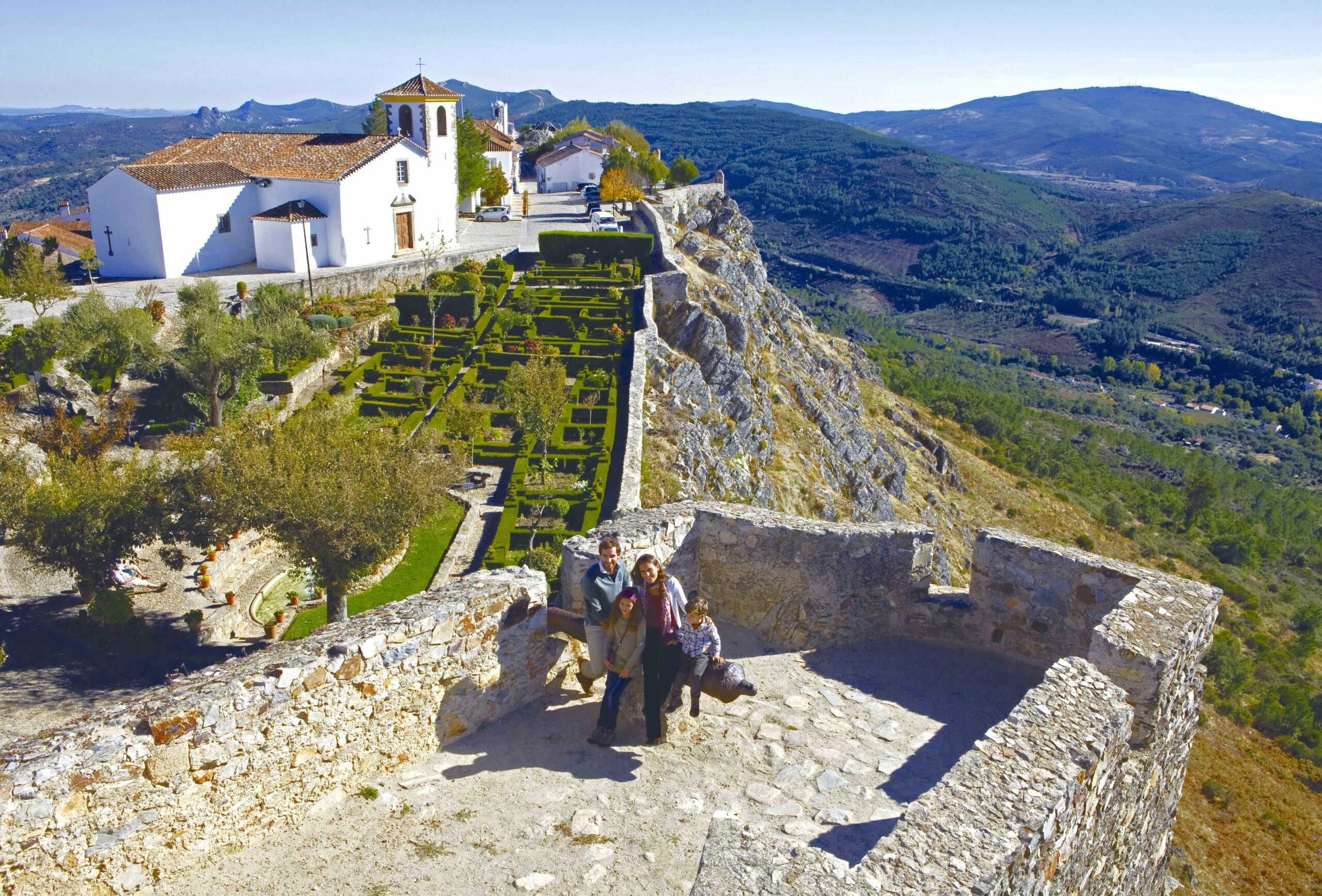
Agriculture dominates day-to-day life across the Alentejo region of Portugal, but it’s also a region with a rich and colourful history. The first settlements date back to 5000 BC and many of Europe’s most-important megalithic sites are here. The Romans came next, drawn by the region’s rich natural resources, as were the Visigoths and the Moors who came in their wake. The crusading Dom Afonso Henrique arrived in the 12th century and the formation of the Kingdom of Portugal followed.
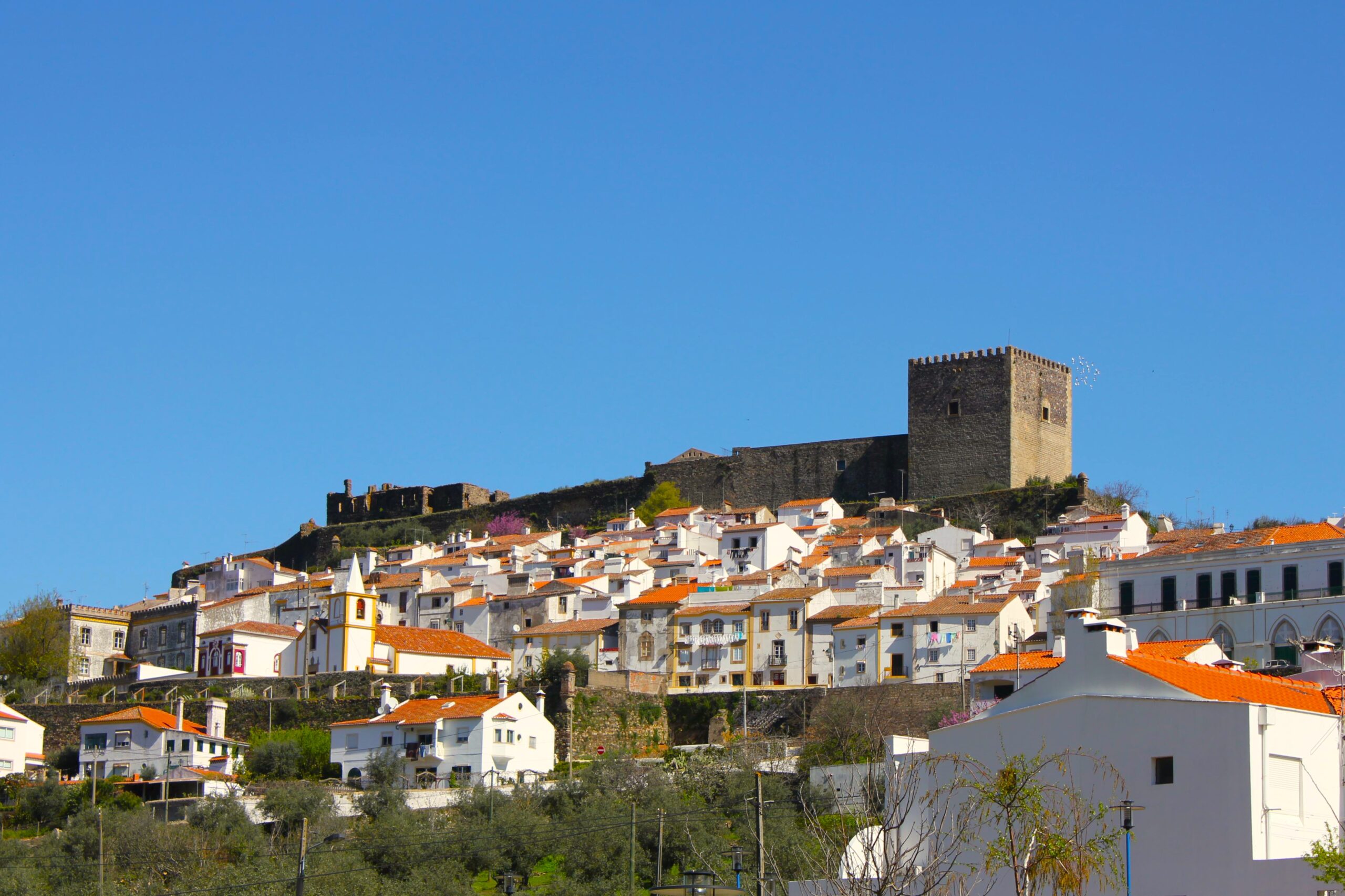
Afonso’s descendant, the 13th century King Dom Dinis, understood Alentejo’s military significance and set about reinforcing Portugal’s eastern border against his hostile Castilian neighbours. Your holiday begins in Castelo de Vide, considered one of the best-preserved medieval towns from this period. Plain old ‘Vide’ was rechristened Castelo da Vide when Dinis rebuilt its Moorish castle and fortified city walls. The town saw a period of rapid expansion as farmers were drawn from the surrounding plains to the safety of the castle. Now referred to as ‘the old quarter’, you’ll have a chance to explore this charming maze of narrow, twisting lanes and cobbled alleyways.
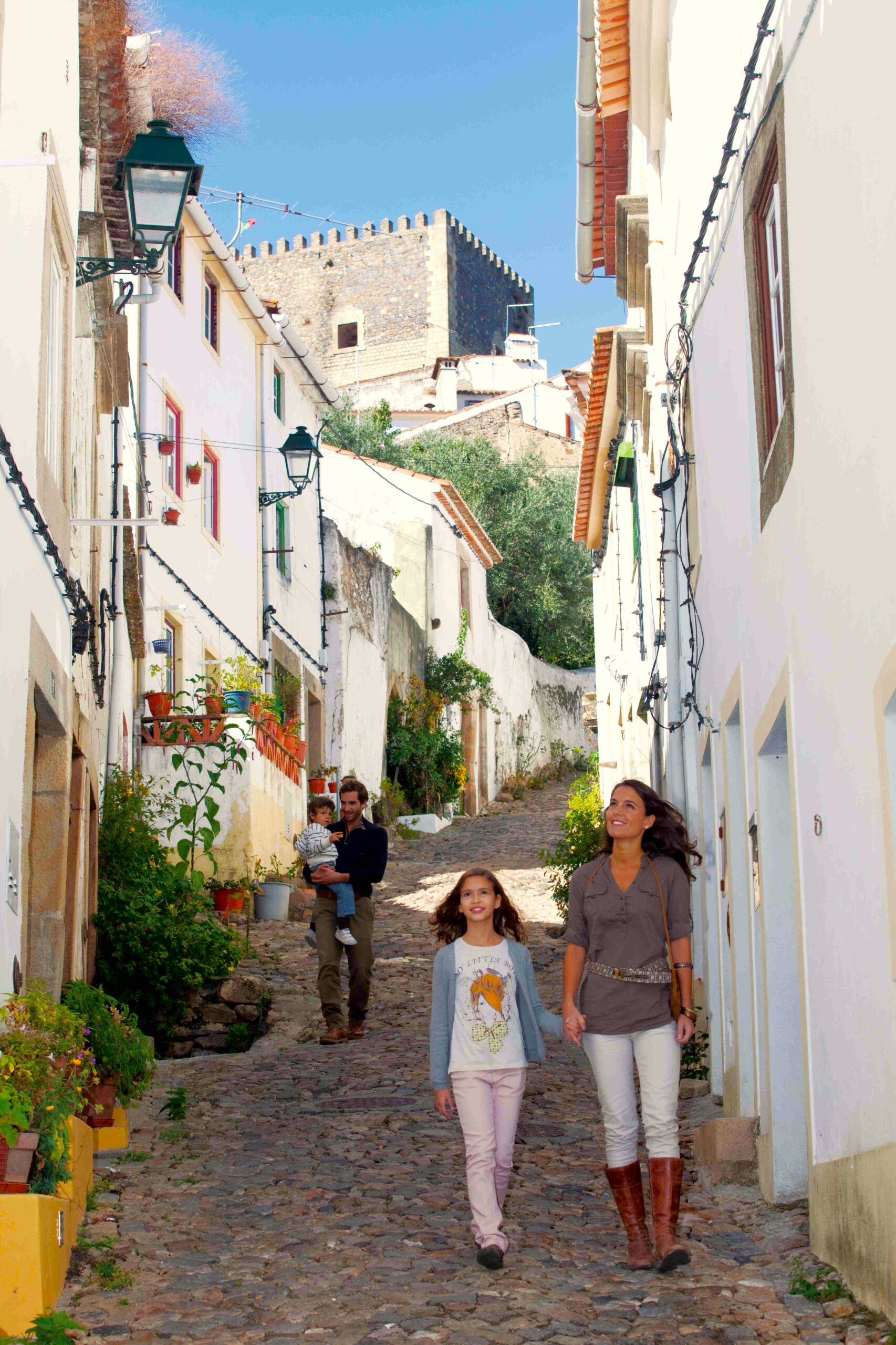
Thankfully, rampaging Castilian’s aren’t so much of a problem these days, and the meandering trails of the Parque de Merendas and the Coureleiros Megalithic Park will lead you through a tranquil landscape of hardy Pyrenean oaks, snub chestnut trees and cultivated olive groves.
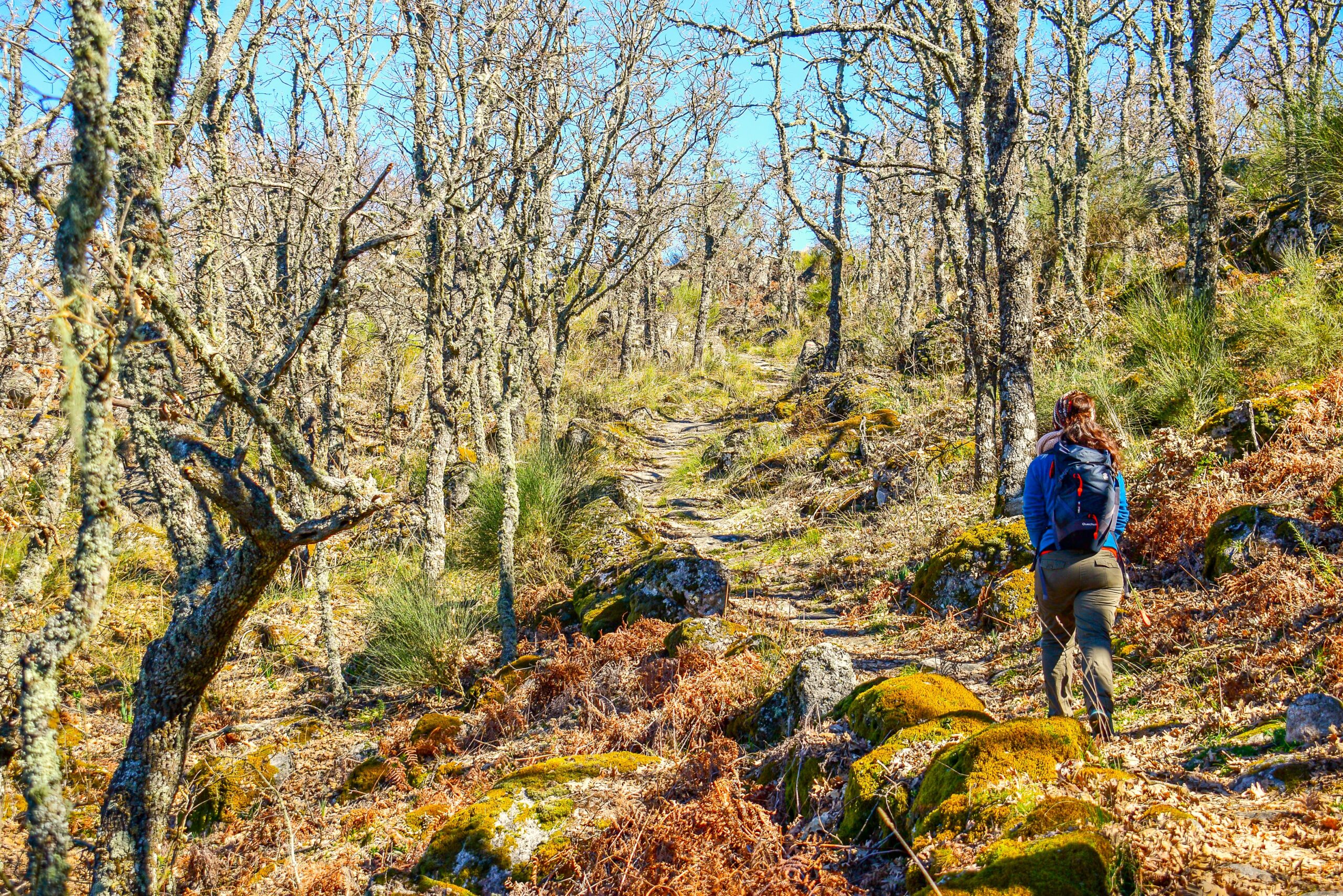
Leaving Vide, you’ll head up to your new accommodation in the hilltop village of Marvao. Sitting on a 900m high granite escarpment, Marvao was a medieval military outpost with a panoramic view across plains of the Rio Sever – another of Portugal’s vulnerable borders. To modern eyes, it’s a pretty, fairytale location which wouldn’t look out of place in an episode of Game of Thrones.
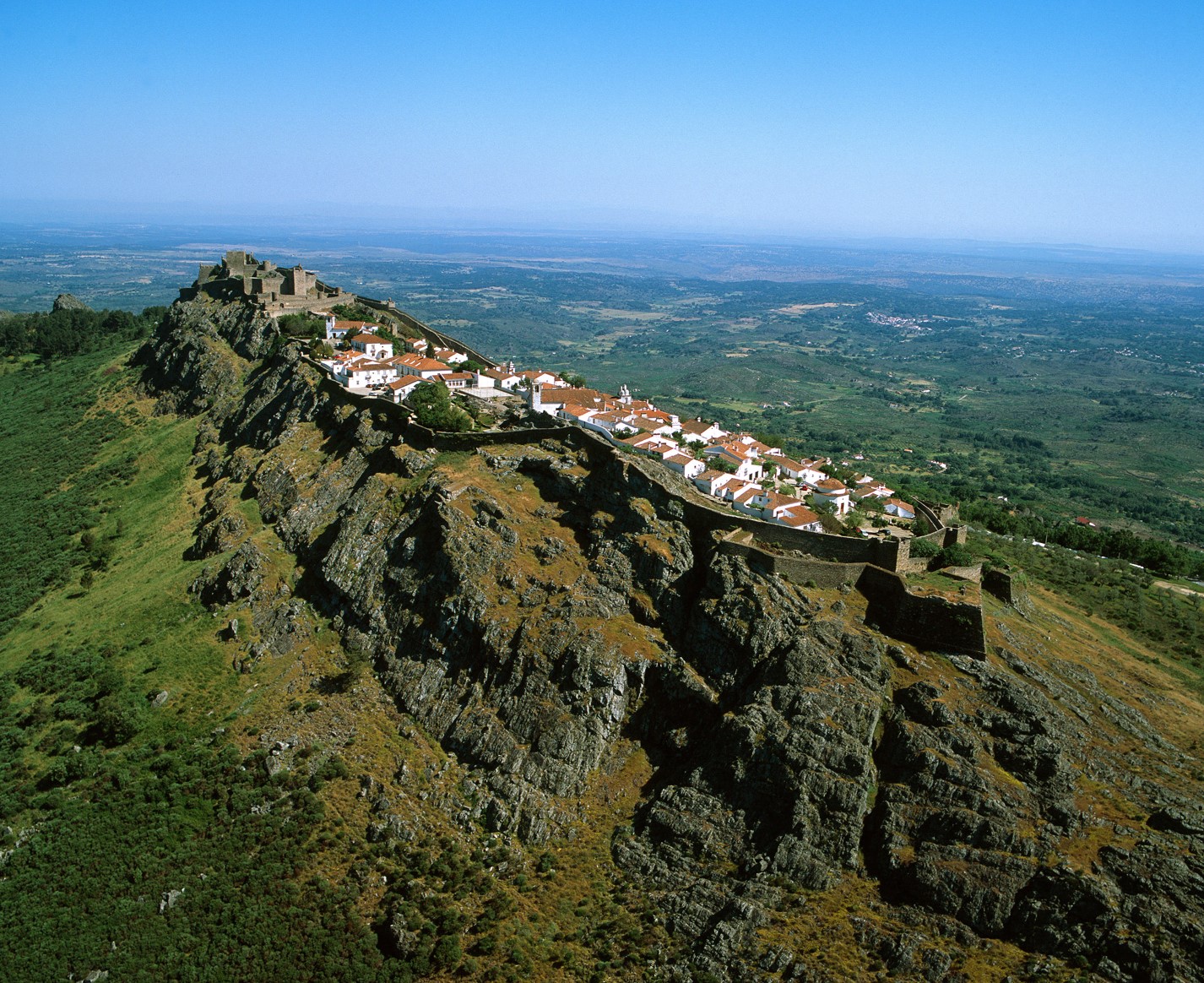
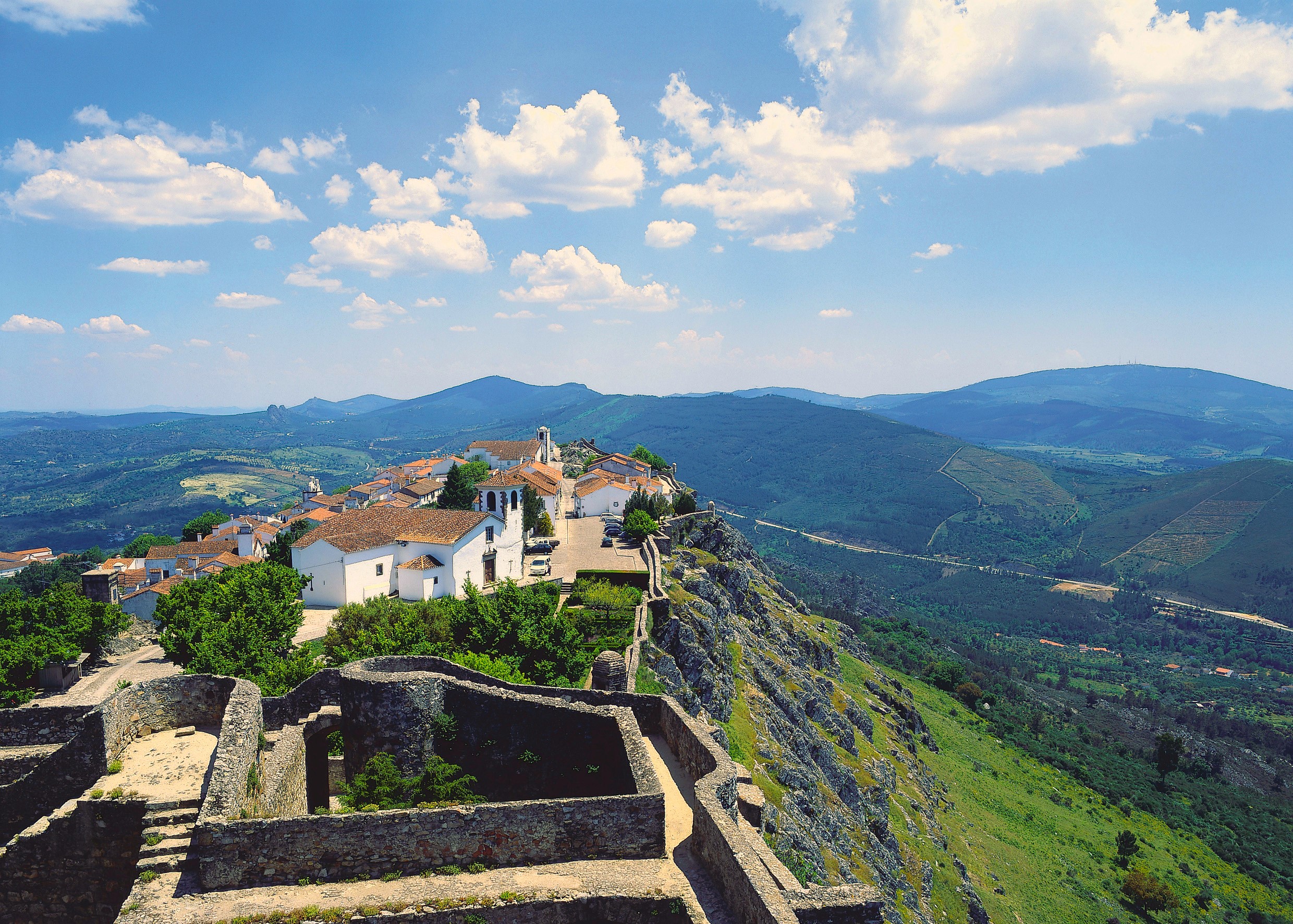
Spring is ideal time of year to stay in this beautifully preserved medieval village, when the walking trails around Portagem and Galegos are surrounded by a sea of wild flowers. Autumn’s also lovely, particularly during the chestnut harvest: Alentejo’s magusto chestnut festivals are a wonderful culinary celebration of one of the Portugal’s best-loved seasonal staples.
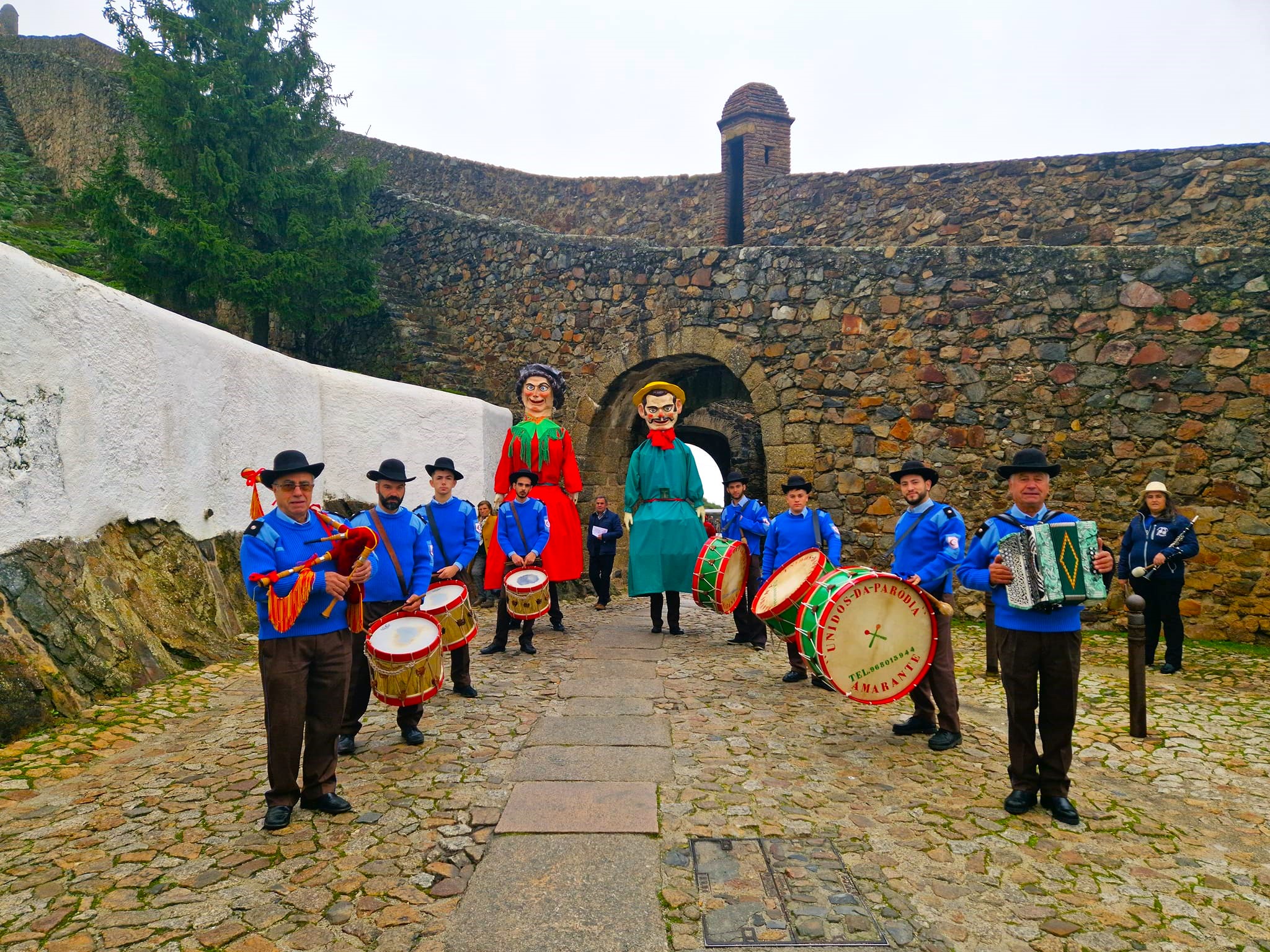
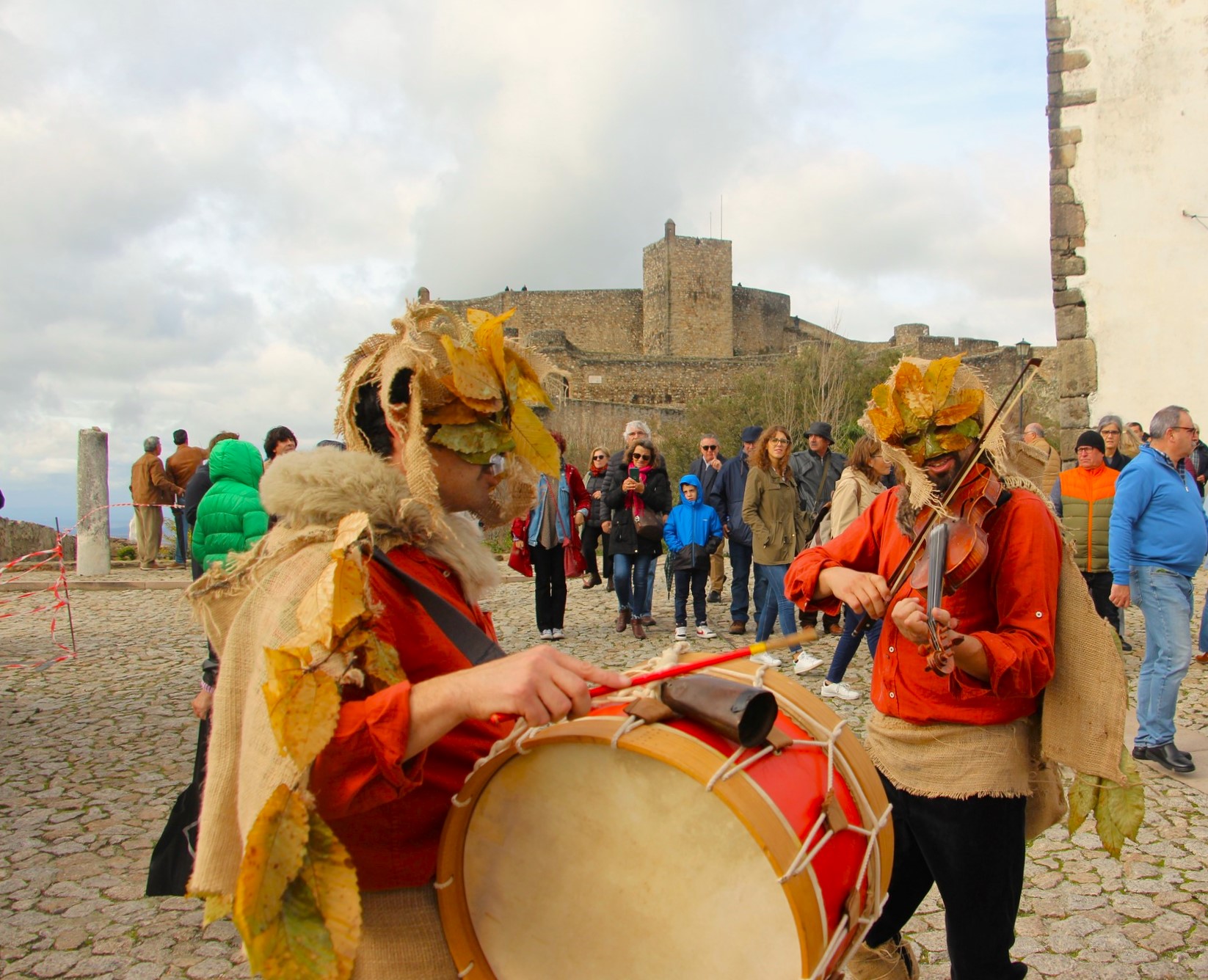
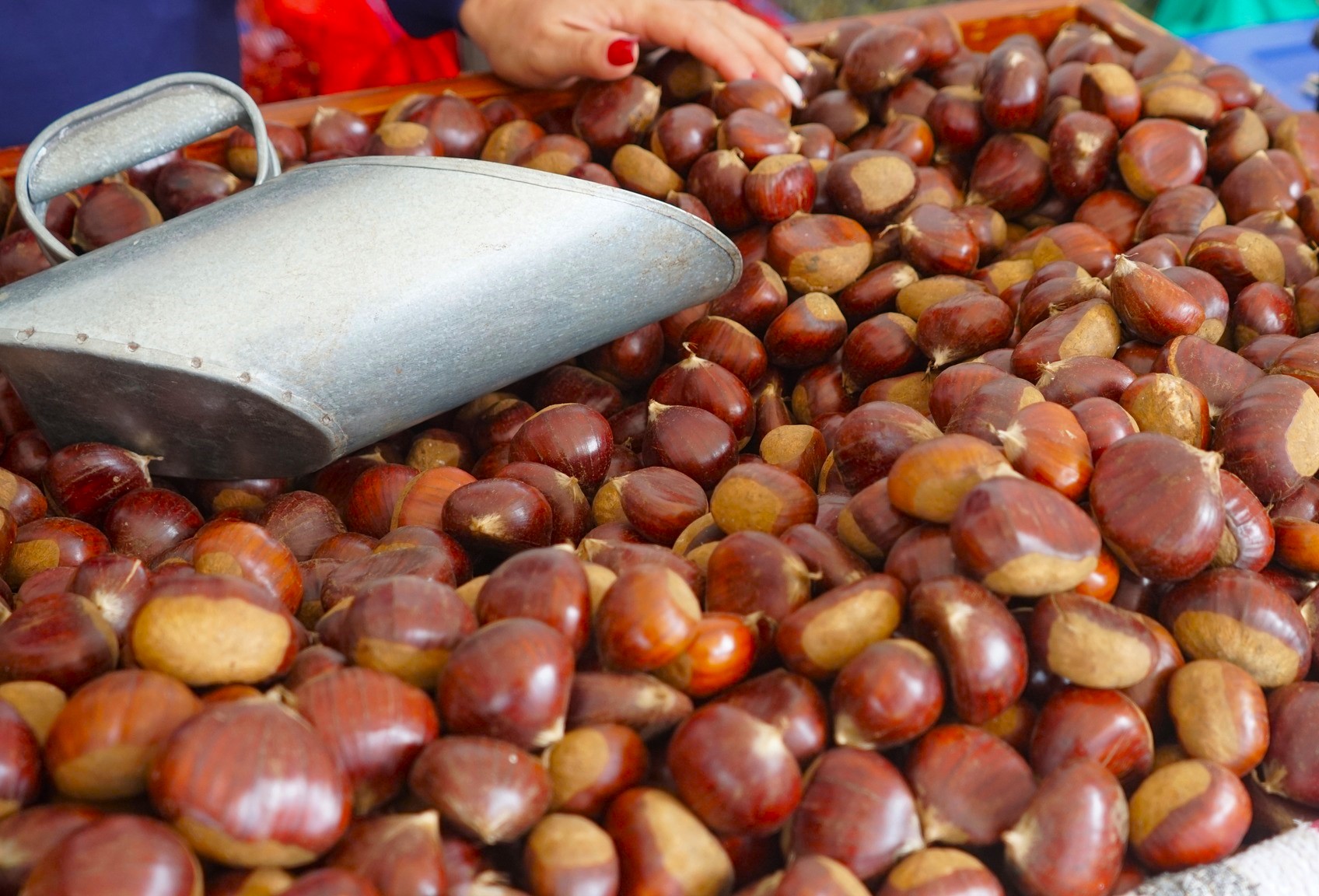
Day 1
You’ll begin your holiday with a direct flight to Lisbon. Our driver will collect you from your flight for your transfer to the My Story Hotel Figueira in the centre of the city.
Day 2
Our driver will collect you from your hotel for the drive from Lisbon to your new accommodation at Casa Amarela in the town of Castelo de Vide. Nestled in the foothills of the Serra de Sao Mamede mountains, Castelo de Vide is considered one of the best-preserved medieval hilltop towns in Portugal.
Day 3
For your first walk, you’ll follow a circular route through the Parque de Merendas, following an ancient, cobbled path onto the Serra de Sao Paulo, (distance: 10km, ascent: 300m, difficulty: easy to moderate).
Day 4
Our driver will transfer you to Meada for today’s walk, which takes you via the Menhir of Meada and the Coureleiros Megalithic Park: two of Europe’s most-important prehistoric sites, (distance: 10km, ascent: 300m, difficulty: easy to moderate).
Day 5
You’ll leave Castelo de Vide today, walking south to your new accommodation: the Dom Dinis in the charming hilltop town of Marvao, (distance: 11km, ascent: 500m, difficulty: easy).
Day 6
You’ll walk the trail from the small olive-oil producing town of Galegos to Marvao, (distance: 9km, ascent: 780m, difficulty: easy to moderate), with an afternoon free to explore the medieval Castelo de Marvao.
Day 7
For your final full day, you’ll walk from Marvao down to Portagem and back again, via the Ponte Romana da Portagem, (distance: 13km, ascent: 400m, difficulty: easy).
Day 8
You’ll be transferred to Lisbon airport for your flight home.
City Tours
A guided tour can be an incredibly useful introduction the layout, cuisine and culture of an unfamiliar city. Our friendly and engaging guides bring the country’s long history to life, whilst giving you an insight into daily life in modern-day Portugal.
Tours often provide you with a list of new sights to see, restaurant recommendations, and an invaluable insight into the dos and don’ts of Portuguese etiquette. You’re also supporting the local economy, local businesses, museums and galleries, and your money helps to preserve many of Portugal’s most-historic buildings.
Hiking
Portugal’s wonderfully diverse range of landscapes make it the ideal destination for hiking holidays. The granite mountains of the Serra da Estrela are Portugal’s highest range (peaking at 1993 metres), and its high plateaus and deep river valleys are home to over 400km of waymarked trails and a wealth of wildlife: boars, otters, golden eagles, peregrine falcons and the elusive Iberian wolf.
Moving south, the Aldeias do Xisto Schist Villages are a collection of timeless, fairy tale hamlets spread across the peaks of Lousa, Acor and Muradal. Centuries of Portuguese history and tradition are preserved in the region’s hearty cuisine and its convivial B&Bs.
The jewel in the crown of Portugal’s walking network is the Rota Vicentina. This cross-region trail network was created in 2012 to help boost the local economies of southern Alentejo and the Algarve – its routes are easily adaptable according to the distance and type of hikes you enjoy, traversing remote cliffs and obscure beaches, with the wild Atlantic Ocean as a backdrop.
Food and Wine
Portuguese cuisine has experienced something of a renaissance in recent times. Once sidelined in favour of more well-known dishes from neighbouring Spain, Portugal’s locally sourced produce and regional wines have moved out of their Iberian neighbour’s shadow to take their rightful seat at the top table of European cuisine.
The capital Lisbon is where many of the country’s long-held culinary traditions are being challenged by a new generation of chefs, whose exciting and imaginative reinventions of classics such as caldo verde, ameijoas a bulhao pato and bolinhos de bacalhau are allowing the best of the country’s sensational produce to shine. Iberian pork is much-coveted, particularly in the Central and Alentejo regions whose farming heritage give its cuisine rustic, hearty slant. Its organic credentials are impeccable: roaming ancient cork forests and subsisting on a diet of acorns which impart a strong, nutty flavour to the meat.
As the western outpost of mainland Europe and with over 900km of coastline, seafood is the backbone of the country’s cuisine. Grilled sardines (sardinhas assadas) are deeply embedded in Portuguese culture and are often central to many religious celebrations, particularly around the Tejo River basin.
There are also thirty-one Denominacao de Origem Controlada regions across the country, producing over two-hundred varieties of wine. Dao, Estremadura, Bairrada, Portimao, Tavira – Portuguese vineyards are low yield and exports don’t compare to France or Italy, and to truly enjoy these wines, you have to be in Portugal.
Guided Tours
Taking on a whole new region of Portugal can be a daunting prospect: studying guidebooks and maps, researching must-see sites and trying to miss those lesser-known hidden gems. Our tours remove the stress of planning and optimise your time, without you feeling rushed or hurried. Our guides will always have a plan, but we prefer private, flexible tours where you’re not tied to a strict timetable.
If you’d like to get your hands dirty in Tras-os-Montes vineyards, with time to savour a glass of local Vino Verde, so be it. If you want to combine out-of-the-way family-run vineyards with the timeless grandeur of medieval Marvao, let us make the arrangements.
Our guides are a treasure trove of local knowledge, and their in-depth insight and passion will unveil Portugal’s extraordinary history, culture and cuisine.
Cycling
From the ancient vineyards of the Douro valley, via the windswept Alentejo plains and down to the seaside towns of the Algarve. The beauty of exploring Portugal on two wheels is in its slowness – unhurried travel allows you to immerse yourself in your surroundings and to explore the country’s rich cultural heritage and unique traditions.
Whether you’re looking for a self-guided, point-to-point cycle touring holiday, a couple of guided road rides during your family holiday, or if you prefer to be off-road, riding natural and man-made singletrack – whatever your preference, we have the bikes, routes and rides to suit all abilities.
Kayaking, SUPs and Surfing
Portugal offers an exciting range of water sports to suit every adventurer: from paddleboarding, kayaking and canoeing, to world-class surfing, kitesurfing and windsurfing,
Northern Portugal is home to many of the best spots for inland water sports – kayaking, canoeing and canyoning are popular thanks to an abundance of lakes, lagoons and waterfalls, and the UNESCO-protected Arouca Geopark is considered one of the best locations in the country for white water rafting. For a more tranquil experience, the calm waters of the Castelo de Bode reservoir are ideal for paddle-boarding, whilst the Aguieira reservoir is a popular destination for sailing and fresh-water fishing.
For would-be adrenalin junkies, the surf schools at Espinho are perfect for surfing newbies. If you’re a seasoned pro, Nazare and Peniche are blessed with year-around consistent swells and a vibrant surf culture. With its exposed location on the far southwestern tip of the Algarve, Sagres has been a mecca for water sports enthusiasts for over fifty years. Its energetic waves and laid-back atmosphere attract old-school surfers and kiteboarders from across the world.
Take a journey back in time, walking Medieval Alentejo.

Agriculture dominates day-to-day life across the Alentejo region of Portugal, but it’s also a region with a rich and colourful history. The first settlements date back to 5000 BC and many of Europe’s most-important megalithic sites are here. The Romans came next, drawn by the region’s rich natural resources, as were the Visigoths and the Moors who came in their wake. The crusading Dom Afonso Henrique arrived in the 12th century and the formation of the Kingdom of Portugal followed.

Afonso’s descendant, the 13th century King Dom Dinis, understood Alentejo’s military significance and set about reinforcing Portugal’s eastern border against his hostile Castilian neighbours. Your holiday begins in Castelo de Vide, considered one of the best-preserved medieval towns from this period. Plain old ‘Vide’ was rechristened Castelo da Vide when Dinis rebuilt its Moorish castle and fortified city walls. The town saw a period of rapid expansion as farmers were drawn from the surrounding plains to the safety of the castle. Now referred to as ‘the old quarter’, you’ll have a chance to explore this charming maze of narrow, twisting lanes and cobbled alleyways.

Thankfully, rampaging Castilian’s aren’t so much of a problem these days, and the meandering trails of the Parque de Merendas and the Coureleiros Megalithic Park will lead you through a tranquil landscape of hardy Pyrenean oaks, snub chestnut trees and cultivated olive groves.

Leaving Vide, you’ll head up to your new accommodation in the hilltop village of Marvao. Sitting on a 900m high granite escarpment, Marvao was a medieval military outpost with a panoramic view across plains of the Rio Sever – another of Portugal’s vulnerable borders. To modern eyes, it’s a pretty, fairytale location which wouldn’t look out of place in an episode of Game of Thrones.


Spring is ideal time of year to stay in this beautifully preserved medieval village, when the walking trails around Portagem and Galegos are surrounded by a sea of wild flowers. Autumn’s also lovely, particularly during the chestnut harvest: Alentejo’s magusto chestnut festivals are a wonderful culinary celebration of one of the Portugal’s best-loved seasonal staples.



Day 1
You’ll begin your holiday with a direct flight to Lisbon. Our driver will collect you from your flight for your transfer to the My Story Hotel Figueira in the centre of the city.
Day 2
Our driver will collect you from your hotel for the drive from Lisbon to your new accommodation at Casa Amarela in the town of Castelo de Vide. Nestled in the foothills of the Serra de Sao Mamede mountains, Castelo de Vide is considered one of the best-preserved medieval hilltop towns in Portugal.
Day 3
For your first walk, you’ll follow a circular route through the Parque de Merendas, following an ancient, cobbled path onto the Serra de Sao Paulo, (distance: 10km, ascent: 300m, difficulty: easy to moderate).
Day 4
Our driver will transfer you to Meada for today’s walk, which takes you via the Menhir of Meada and the Coureleiros Megalithic Park: two of Europe’s most-important prehistoric sites, (distance: 10km, ascent: 300m, difficulty: easy to moderate).
Day 5
You’ll leave Castelo de Vide today, walking south to your new accommodation: the Dom Dinis in the charming hilltop town of Marvao, (distance: 11km, ascent: 500m, difficulty: easy).
Day 6
You’ll walk the trail from the small olive-oil producing town of Galegos to Marvao, (distance: 9km, ascent: 780m, difficulty: easy to moderate), with an afternoon free to explore the medieval Castelo de Marvao.
Day 7
For your final full day, you’ll walk from Marvao down to Portagem and back again, via the Ponte Romana da Portagem, (distance: 13km, ascent: 400m, difficulty: easy).
Day 8
You’ll be transferred to Lisbon airport for your flight home.
City Tours
A guided tour can be an incredibly useful introduction the layout, cuisine and culture of an unfamiliar city. Our friendly and engaging guides bring the country’s long history to life, whilst giving you an insight into daily life in modern-day Portugal.
Tours often provide you with a list of new sights to see, restaurant recommendations, and an invaluable insight into the dos and don’ts of Portuguese etiquette. You’re also supporting the local economy, local businesses, museums and galleries, and your money helps to preserve many of Portugal’s most-historic buildings.
Hiking
Portugal’s wonderfully diverse range of landscapes make it the ideal destination for hiking holidays. The granite mountains of the Serra da Estrela are Portugal’s highest range (peaking at 1993 metres), and its high plateaus and deep river valleys are home to over 400km of waymarked trails and a wealth of wildlife: boars, otters, golden eagles, peregrine falcons and the elusive Iberian wolf.
Moving south, the Aldeias do Xisto Schist Villages are a collection of timeless, fairy tale hamlets spread across the peaks of Lousa, Acor and Muradal. Centuries of Portuguese history and tradition are preserved in the region’s hearty cuisine and its convivial B&Bs.
The jewel in the crown of Portugal’s walking network is the Rota Vicentina. This cross-region trail network was created in 2012 to help boost the local economies of southern Alentejo and the Algarve – its routes are easily adaptable according to the distance and type of hikes you enjoy, traversing remote cliffs and obscure beaches, with the wild Atlantic Ocean as a backdrop.
Food and Wine
Portuguese cuisine has experienced something of a renaissance in recent times. Once sidelined in favour of more well-known dishes from neighbouring Spain, Portugal’s locally sourced produce and regional wines have moved out of their Iberian neighbour’s shadow to take their rightful seat at the top table of European cuisine.
The capital Lisbon is where many of the country’s long-held culinary traditions are being challenged by a new generation of chefs, whose exciting and imaginative reinventions of classics such as caldo verde, ameijoas a bulhao pato and bolinhos de bacalhau are allowing the best of the country’s sensational produce to shine. Iberian pork is much-coveted, particularly in the Central and Alentejo regions whose farming heritage give its cuisine rustic, hearty slant. Its organic credentials are impeccable: roaming ancient cork forests and subsisting on a diet of acorns which impart a strong, nutty flavour to the meat.
As the western outpost of mainland Europe and with over 900km of coastline, seafood is the backbone of the country’s cuisine. Grilled sardines (sardinhas assadas) are deeply embedded in Portuguese culture and are often central to many religious celebrations, particularly around the Tejo River basin.
There are also thirty-one Denominacao de Origem Controlada regions across the country, producing over two-hundred varieties of wine. Dao, Estremadura, Bairrada, Portimao, Tavira – Portuguese vineyards are low yield and exports don’t compare to France or Italy, and to truly enjoy these wines, you have to be in Portugal.
Guided Tours
Taking on a whole new region of Portugal can be a daunting prospect: studying guidebooks and maps, researching must-see sites and trying to miss those lesser-known hidden gems. Our tours remove the stress of planning and optimise your time, without you feeling rushed or hurried. Our guides will always have a plan, but we prefer private, flexible tours where you’re not tied to a strict timetable.
If you’d like to get your hands dirty in Tras-os-Montes vineyards, with time to savour a glass of local Vino Verde, so be it. If you want to combine out-of-the-way family-run vineyards with the timeless grandeur of medieval Marvao, let us make the arrangements.
Our guides are a treasure trove of local knowledge, and their in-depth insight and passion will unveil Portugal’s extraordinary history, culture and cuisine.
Cycling
From the ancient vineyards of the Douro valley, via the windswept Alentejo plains and down to the seaside towns of the Algarve. The beauty of exploring Portugal on two wheels is in its slowness – unhurried travel allows you to immerse yourself in your surroundings and to explore the country’s rich cultural heritage and unique traditions.
Whether you’re looking for a self-guided, point-to-point cycle touring holiday, a couple of guided road rides during your family holiday, or if you prefer to be off-road, riding natural and man-made singletrack – whatever your preference, we have the bikes, routes and rides to suit all abilities.
Kayaking, SUPs and Surfing
Portugal offers an exciting range of water sports to suit every adventurer: from paddleboarding, kayaking and canoeing, to world-class surfing, kitesurfing and windsurfing,
Northern Portugal is home to many of the best spots for inland water sports – kayaking, canoeing and canyoning are popular thanks to an abundance of lakes, lagoons and waterfalls, and the UNESCO-protected Arouca Geopark is considered one of the best locations in the country for white water rafting. For a more tranquil experience, the calm waters of the Castelo de Bode reservoir are ideal for paddle-boarding, whilst the Aguieira reservoir is a popular destination for sailing and fresh-water fishing.
For would-be adrenalin junkies, the surf schools at Espinho are perfect for surfing newbies. If you’re a seasoned pro, Nazare and Peniche are blessed with year-around consistent swells and a vibrant surf culture. With its exposed location on the far southwestern tip of the Algarve, Sagres has been a mecca for water sports enthusiasts for over fifty years. Its energetic waves and laid-back atmosphere attract old-school surfers and kiteboarders from across the world.

